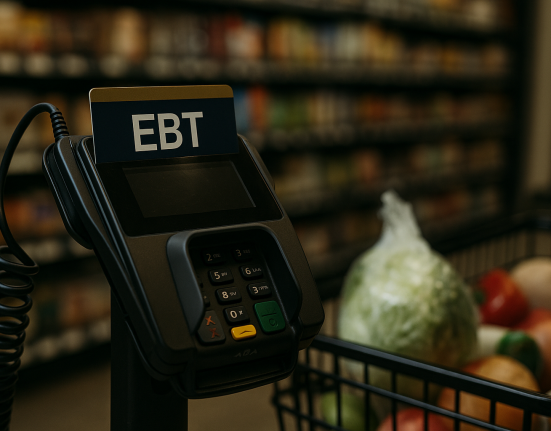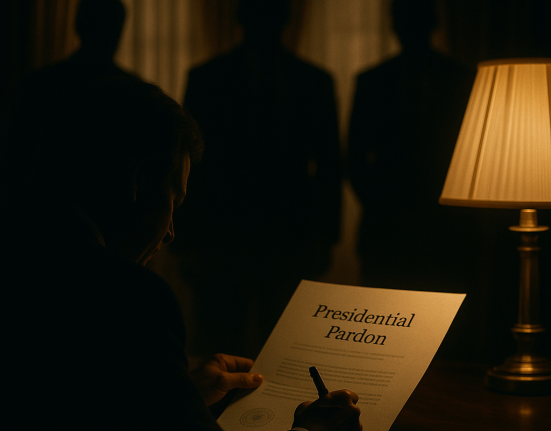PHILADELPHIA (AP) — The U.S. Mint in Philadelphia struck its final circulating penny Wednesday, officially ending the nation’s longest-running coin denomination after more than 230 years of production. President Donald Trump ordered the phase-out earlier this year, calling the penny “wasteful” as production costs rose to nearly four cents per coin.
“For far too long the United States has minted pennies which literally cost us more than 2 cents,” Trump wrote in February. “This is so wasteful!”
The Mint, founded in 1792, produced its first pennies the following year. The small copper-colored coin has been a constant in the American pocket ever since — featuring presidents, mottos, and symbols that mirrored U.S. identity through centuries of war, industrialization, and economic change.
Today, however, pennies are rarely essential in financial transactions, as most Americans rely on cards or digital payments. The federal government estimates that roughly 88% of all retail purchases are now rounded electronically or completed without cash.
Retailers left in limbo
Despite broad support for cost savings, many retailers and small businesses said the rollout was abrupt. The Treasury provided no uniform guidelines for handling rounding during cash transactions, leaving businesses to adopt their own methods.
Some convenience stores have begun rounding purchases down to the nearest nickel, while others ask customers to pay exact change. A few creative stores offered small incentives — such as a free coffee — to customers turning in jars of old pennies.
“We’ve advocated for abolition of the penny for 30 years,” said Jeff Lenard of the National Association of Convenience Stores. “But this is not the way we wanted it to go. There’s confusion at the counter and it hurts cash-based customers the most.”
The uneven implementation could create regional disparities, economists warn. For example, states with higher cash usage, including parts of the South and Midwest, may face rounding errors that slightly disadvantage consumers over time.
The Treasury Department has said it expects to save $56 million per year by halting penny production. Still, the move highlights a paradox: the penny, though costly, remains cheaper to produce than the nickel, which now costs about 14 cents to mint.
The economics of small change
With the penny gone, cash transactions will depend more heavily on nickels, dimes, and quarters. Financial analysts suggest that merchants might eventually round prices to the nearest five cents, a practice already used in Canada, New Zealand, and Australia, where pennies were retired years ago.
While the effect on inflation is expected to be negligible, the psychological impact could be more significant. “Consumers often perceive rounded-up prices as higher, even if the difference is a cent or two,” said Dr. Janine Carver, a behavioral economist at George Washington University. “That perception can subtly influence spending habits, especially among lower-income households that rely on cash.”
Banks have already started rationing existing pennies, leading to short-term shortages and renewed interest in older coins. According to the Mint, there are still more than 140 billion pennies in circulation, many tucked away in drawers and jars.
Could pennies become valuable collectibles?
Numismatists — coin collectors — are already speculating that early or final-edition pennies could gain value over time. Collectors point to how the discontinuation of small denominations in other countries led to rapid appreciation of final production runs.
“The last pennies struck in 2025 could become instant historical artifacts,” said Susan Headley, editor of CoinWeek. “Just like the steel cents of 1943, their significance lies not in the metal but in the moment they mark — the end of an American tradition.”
Experts predict that coins featuring production marks from the final batch may sell for $50–$100 initially, with prices rising as their availability declines. Some enthusiasts also anticipate new commemorative sets that will further drive interest among investors.
Beyond collector markets, there’s speculation that copper-based pre-1982 pennies, which contain nearly three grams of copper each, may appreciate in commodity value as copper prices rise — though melting coins for metal remains illegal under federal law.
A cultural farewell
Historians lament more than just the loss of a coin. “We put our values on coins — liberty, faith, presidents, symbols of unity,” said Frank Holt, emeritus professor of history at the University of Houston. “The penny has been a small but enduring reflection of who we are as a nation.”
The Mint’s final ceremonial strike Wednesday was attended by Treasury Secretary Scott Bessent and Treasurer Brandon Beach, who praised the coin’s historical role even as they emphasized efficiency.
For many Americans, the end of the penny feels both practical and nostalgic — a sign of modern efficiency on one hand, and a quiet farewell to a familiar icon on the other.
As Holt put it: “Even a single cent can carry the weight of centuries. When that disappears, a little piece of our shared story goes with it.”
References
- Associated Press: “U.S. Mint strikes final penny as coin discontinued” (Nov. 12, 2025)
- U.S. Treasury Department press statement on currency efficiency (2025)
- National Association of Convenience Stores briefing (Oct. 2025)
- Federal Reserve Consumer Payment Trends Report (2025)
- CoinWeek and Numismatic News interviews (Nov. 2025)








Leave feedback about this
You must be logged in to post a comment.